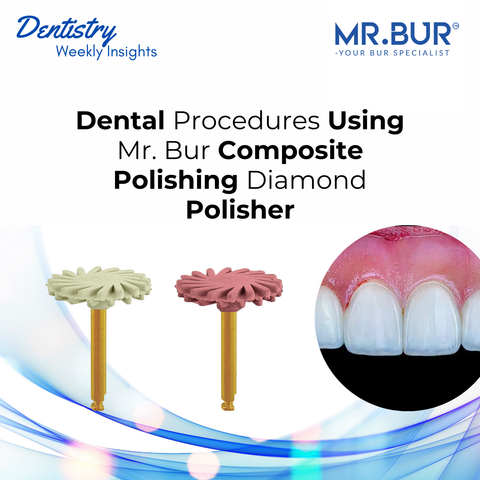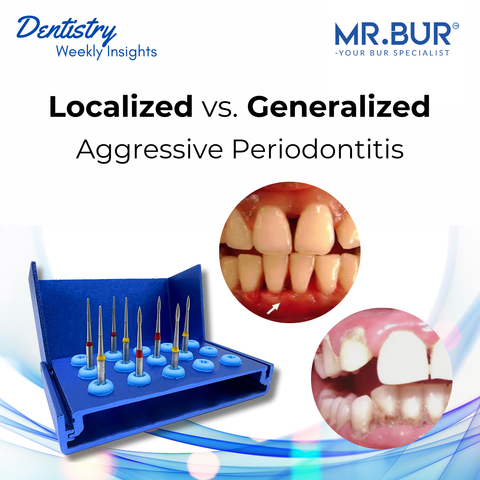Dental veneers are a cornerstone of cosmetic dentistry, offering transformative solutions for patients seeking enhanced aesthetics and function. As a dentist, understanding the materials used in veneers and the tools available for their preparation, such as the Mr. Bur Veneer Preparation Kit, is critical for achieving precision and patient satisfaction. This blog explores the 3 primary types of dental veneers based on material – porcelain (ceramic), composite resin, and plastic/acrylic, while highlighting how Mr. Bur Veneer Preparation Kit can streamline your veneer preparation process.
1. Porcelain (Ceramic) Veneers
Porcelain veneers, crafted from dental-grade ceramic like lithium disilicate or feldspathic porcelain, are the gold standard for durability and aesthetics. They mimic the translucency of natural enamel, resist stains, and last 10–15 years with proper care.
Key Features
-
Aesthetics: Exceptional light reflection for a natural look.
-
Durability: Resistant to staining and wear.
-
Preparation: Traditional veneers require 0.5 - 1.0mm enamel reduction; no-prep options need minimal or no removal.
-
Applications: Ideal for severe discoloration, chips, gaps, or minor misalignment.
Preparation Considerations
Porcelain veneer preparation demands precision to ensure adequate space and strong bonding without compromising tooth structure. The Mr. Bur Veneer Preparation Kit FG, includes diamond burs and abrasives tailored for this purpose. For example:
-
Round Ball Coarse Diamond Burs facilitate initial enamel reduction and outline shaping, ensuring smooth, curved cuts.
-
Taper Rounded End Coarse Burs create precise margins and uniform depth (0.3 - 0.5 mm), critical for veneer fit.
-
Fine Grit Cylinder Round End Burs refine surfaces for enhanced adhesive retention.
These tools, with their 3-layer diamond coating, offer cutting efficiency and durability, minimizing over-reduction and ensuring a polished surface for bonding. Use depth-cutting burs with water cooling to prevent thermal damage, and check for undercuts with an explorer for a seamless fit.
Clinical Tips
-
Use a diagnostic wax-up to plan aesthetics and occlusion.
-
Employ a rubber dam for a dry, clean field during preparation.
-
For no-prep veneers, ensure patient suitability (e.g., minimal discoloration) to avoid marginal issues.
2. Composite Resin Veneers
Composite resin veneers are made from a tooth-colored resin applied directly or indirectly to the tooth. They are cost-effective, often completed in one visit, and suitable for minor cosmetic corrections. However, they are less durable (5–7 years) and more prone to staining than porcelain.
Key Features
-
Aesthetics: Good but less translucent than porcelain.
-
Cost: More affordable than porcelain veneers
-
Preparation: Minimal or no enamel removal, often reversible.
-
Applications: Best for small chips, slight discoloration, or gaps.
Preparation Considerations
Composite veneer preparation requires careful etching and layering for secure bonding. The Mr. Bur Veneer Preparation Kit supports this process with:
-
Cylinder Round End Coarse Diamond Burs for contouring and uniform surface preparation.
-
Fine Grit Polishing Burs to smooth the tooth surface, enhancing resin adhesion.
These burs allow controlled enamel roughening without excessive reduction, preserving tooth structure. The kit’s autoclavable design ensures compliance with global hygiene standards, making it a reliable choice for dentists worldwide. Apply resin in thin layers, curing each with a light to achieve the desired shape and polish for a natural finish.
Clinical Tips
-
Roughen enamel slightly to improve bonding without removing excessive material.
-
Advise patients to avoid staining agents (e.g., coffee, red wine) to extend veneer life.
-
Use a soft-bristled toothbrush and non-abrasive toothpaste for maintenance.
3. Plastic/Acrylic Veneers
Plastic or acrylic veneers, often called snap-on or clip-on veneers, are temporary, removable covers made from plastic or acrylic. Available as custom-made (by dental labs) or over-the-counter products, they serve as a low-cost, non-invasive option for cosmetic enhancement.
Key Features
-
Aesthetics: Poor to fair, often appearing bulky or artificial.
-
Cost: Highly affordable
-
Preparation: No enamel removal; veneers snap over existing teeth.
-
Applications: Temporary fixes for events, photos, or budget-conscious patients.
Preparation Considerations
Unlike porcelain or composite veneers, plastic/acrylic veneers require no tooth preparation, as they are not bonded. However, for custom versions, dentists may use tools like the Mr. Bur Veneer Preparation Kit to adjust occlusion or polish adjacent teeth for better fit. The kit’s Fine Grit Polishing Burs can smooth enamel surfaces to prevent irritation from the veneer’s edges, ensuring patient comfort. Impressions or digital scans are taken to ensure a snug fit, and patients must be educated on proper cleaning to avoid bacterial buildup.
Clinical Tips
-
Screen patients for realistic expectations, as aesthetics are limited.
-
Emphasize hygiene: Remove and clean veneers after use to prevent plaque accumulation.
-
Monitor for speech or comfort issues, adjusting fit as needed.
Porcelain, composite resin, and plastic/acrylic veneers each serve unique patient needs, from premium long-term solutions to budget-friendly temporary fixes. By mastering their preparation with tools like the Mr. Bur Veneer Preparation Kit, dentists can deliver exceptional results with precision and efficiency. Stay updated on material advancements and preparation techniques to meet the diverse demands of patients worldwide.
For more on the Mr. Bur Veneer Preparation Kit, visit Mr. Bur’s official website.
MR. BUR CANADA we provide a wide range of dental burs selection in global.
Diamond Burs, Carbide Burs, Surgical & Lab Use Burs, Endodontic burs, IPR Kit, Crown Cutting Kit, Gingivectomy Kit, Root Planning Kit, Orthodontic Kit, Composite Polishers, High Speed Burs, Low Speed Burs


